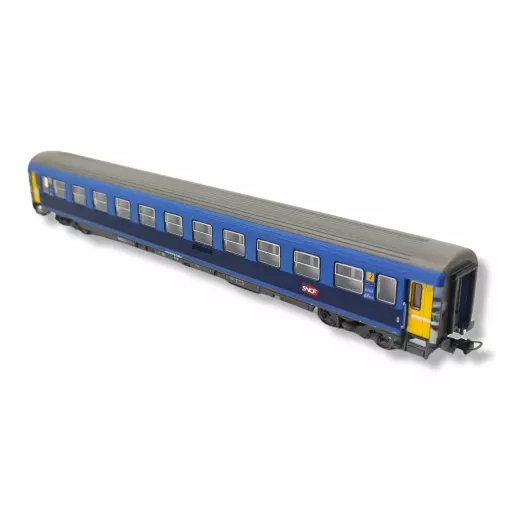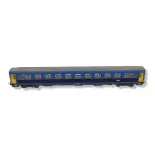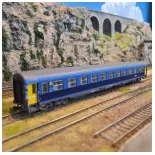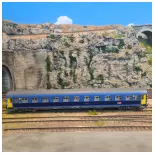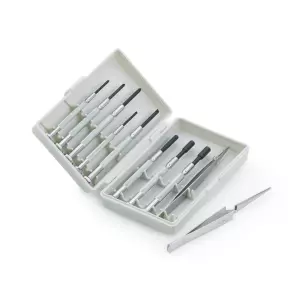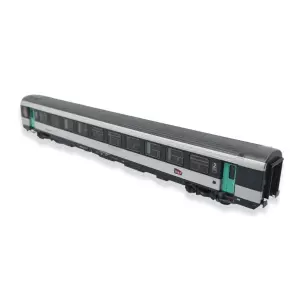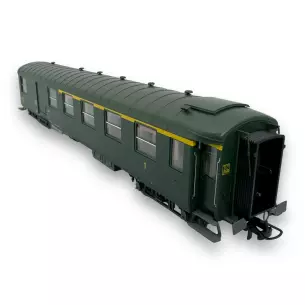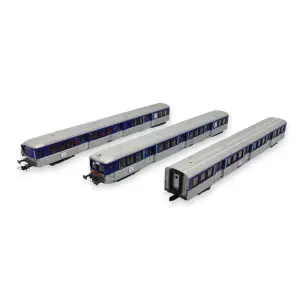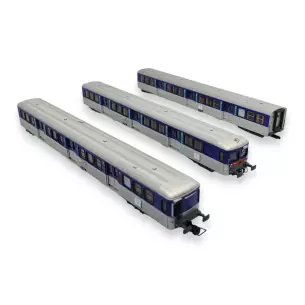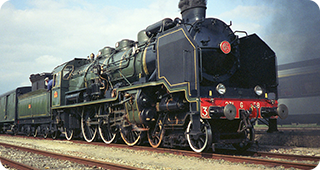Corail cars are passenger cars of the Société nationale des chemins de fer français, put into service between 1975 and 1989.
The baptismal name "Corail," which also applies to trains composed of these cars, is a word-valise formed from "comfort" and "rail." This name popularized by advertising also evokes the bright orange color of the doors that characterized the first livery of these cars.
Their original livery, light gray with dark gray bay stripes and orange-colored doors, contrasted with the "wagon green" of previous generations. They were characterized by the generalization of air conditioning, their qualities of comfort, suspension and soundproofing, as well as ride (anti-skid equipment on all cars and suitability for 160 km/h and 200 km/h). Their massive introduction, nearly 4,000 of them, has led to a real leap in the quality of SNCF passenger service.
Although the majority of these cars are still in service in 2019, the oldest ones have already been written off from the SNCF fleet. The new Coradia Liner equipment should soon succeed them. They have undergone two renovations: Corail Plus from 1995 and then Téoz from the 2000s. Some cars assigned to TER services have been renovated by the Regional Councils. Since 2012, all Lunéa and Téoz cars coming out of the workshop are dressed in the Carmillon livery.
Originally intended for mainline trains, several examples have also been returned to TER services. Most European networks have acquired equipment identical to the Corail cars (Portugal, Romania) or inspired by them (Switzerland, Austria, etc.).
Night trains, Intercités de nuit (formerly Lunéa), are also composed of Corail cars.







